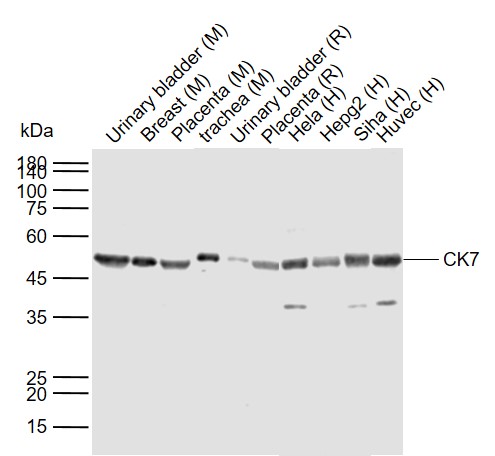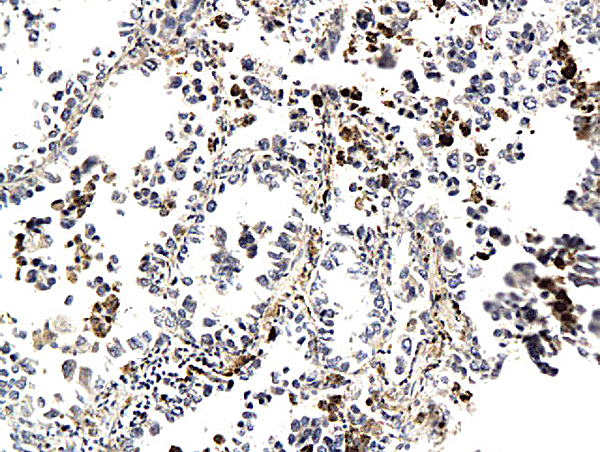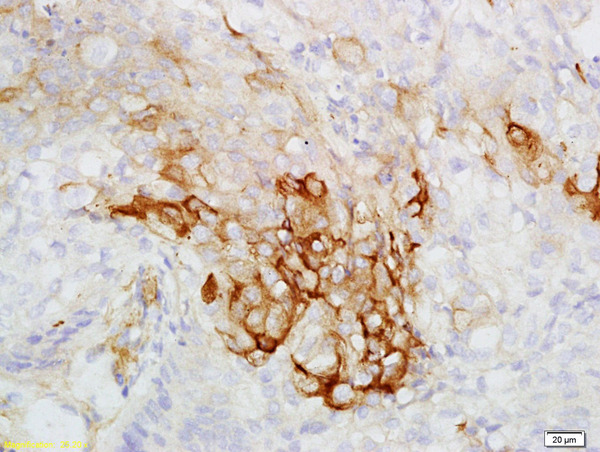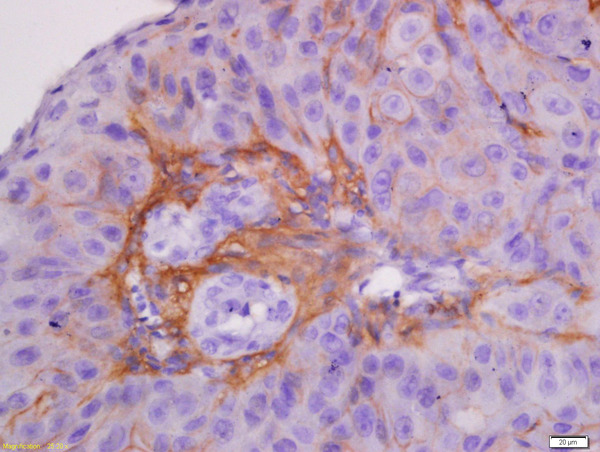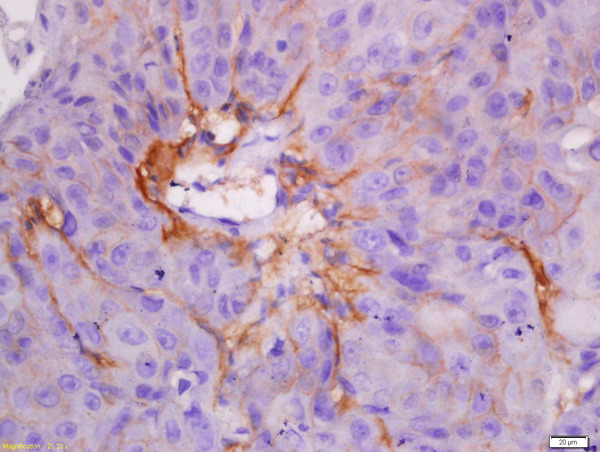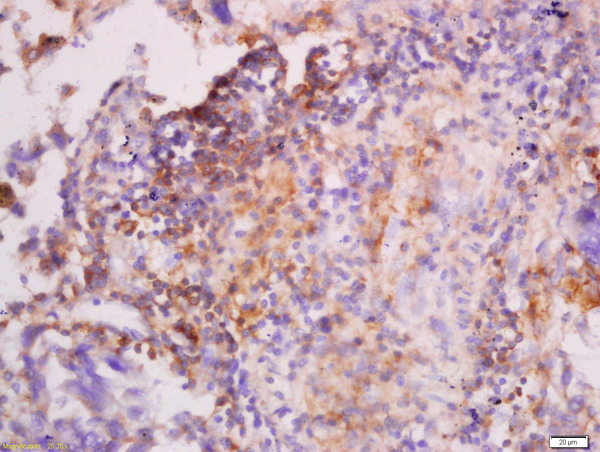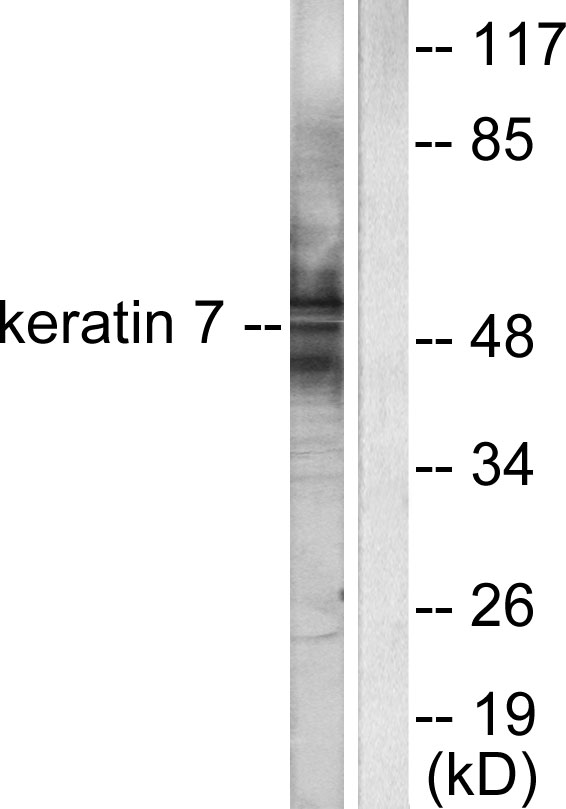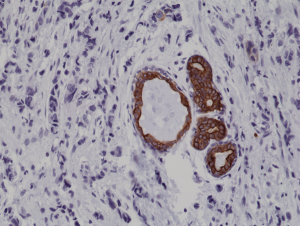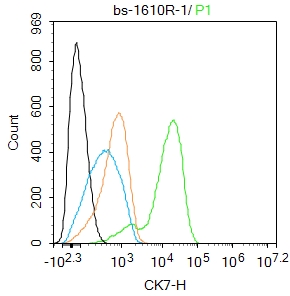
Hela cells were fixed with 4% PFA for 10min at room temperature,permeabilized with 90% ice-cold methanol for 20 min at -20℃, and incubated in 5% BSA blocking buffer for 30 min at room temperature. Cells were then stained with CK7 Polyclonal Antibody(bs-1610R)at 1:100 dilution in blocking buffer and incubated for 30 min at room temperature, washed twice with 2%BSA in PBS, followed by secondary antibody incubation for 40 min at room temperature. Acquisitions of 20,000 events were performed. Cells stained with primary antibody (green), and isotype control (orange).
CK7 Polyclonal Antibody
BS-1610R
ApplicationsFlow Cytometry, ImmunoFluorescence, Western Blot, ELISA, ImmunoCytoChemistry, ImmunoHistoChemistry, ImmunoHistoChemistry Frozen, ImmunoHistoChemistry Paraffin
Product group Antibodies
ReactivityHuman, Mouse, Rat
TargetKRT7
Overview
- SupplierBioss
- Product NameCK7 Polyclonal Antibody
- Delivery Days Customer16
- ApplicationsFlow Cytometry, ImmunoFluorescence, Western Blot, ELISA, ImmunoCytoChemistry, ImmunoHistoChemistry, ImmunoHistoChemistry Frozen, ImmunoHistoChemistry Paraffin
- Applications SupplierWB(1:300-5000), ELISA(1:500-1000), FCM(1:20-100), IHC-P(1:200-400), IHC-F(1:100-500), IF(IHC-P)(1:50-200), IF(IHC-F)(1:50-200), IF(ICC)(1:50-200)
- CertificationResearch Use Only
- ClonalityPolyclonal
- Concentration1 ug/ul
- ConjugateUnconjugated
- Gene ID3855
- Target nameKRT7
- Target descriptionkeratin 7
- Target synonymsCK7, K2C7, K7, SCL, keratin, type II cytoskeletal 7, CK-7, cytokeratin 7, keratin 7, type II, keratin, 55K type II cytoskeletal, keratin, simple epithelial type I, K7, sarcolectin, type II mesothelial keratin K7, type-II keratin Kb7
- HostRabbit
- IsotypeIgG
- Protein IDP08729
- Protein NameKeratin, type II cytoskeletal 7
- ReactivityHuman, Mouse, Rat
- Storage Instruction-20°C
- UNSPSC12352203
References
- Ding DC, Liu HW, Chang YH, et al. Expression of CD133 in endometrial cancer cells and its implications. J Cancer. 2017,8(11):2142-2153. doi: 10.7150/jca.18869Read this paper
- Uchikura Y, Matsubara K, Muto Y, et al. Extranuclear Translocation of High-Mobility Group A1 Reduces the Invasion of Extravillous Trophoblasts Involved in the Pathogenesis of Preeclampsia: New Aspect of High-Mobility Group A1. Reprod Sci. 2017,24(12):1630-1638. doi: 10.1177/1933719117697254Read this paper
- Hu X, Li J, Zhang Q, et al. Phosphoinositide 3-Kinase (PI3K) Subunit p110δ Is Essential for Trophoblast Cell Differentiation and Placental Development in Mouse. Sci Rep. 2016,6:28201. doi: 10.1038/srep28201Read this paper
- Matsubara K, Matsubara Y, Mori M, et al. Immune activation during the implantation phase causes preeclampsia-like symptoms via the CD40-CD40 ligand pathway in pregnant mice. Hypertens Res. 2016,39(6):407-14. doi: 10.1038/hr.2015.160Read this paper
- Chen H, Sun M, Liu J, et al. Silencing of Paternally Expressed Gene 10 Inhibits Trophoblast Proliferation and Invasion. PLoS One. 2015,10(12):e0144845. doi: 10.1371/journal.pone.0144845Read this paper
- Hu B, Zhou H, Gao H, et al. IFN-γ inhibits osteopontin expression in human decidual stromal cells and can be attenuated by 1α,25-dihydroxyvitamin D3. Am J Reprod Immunol. 2012,68(4):353-61. doi: 10.1111/j.1600-0897.2012.01175.xRead this paper



